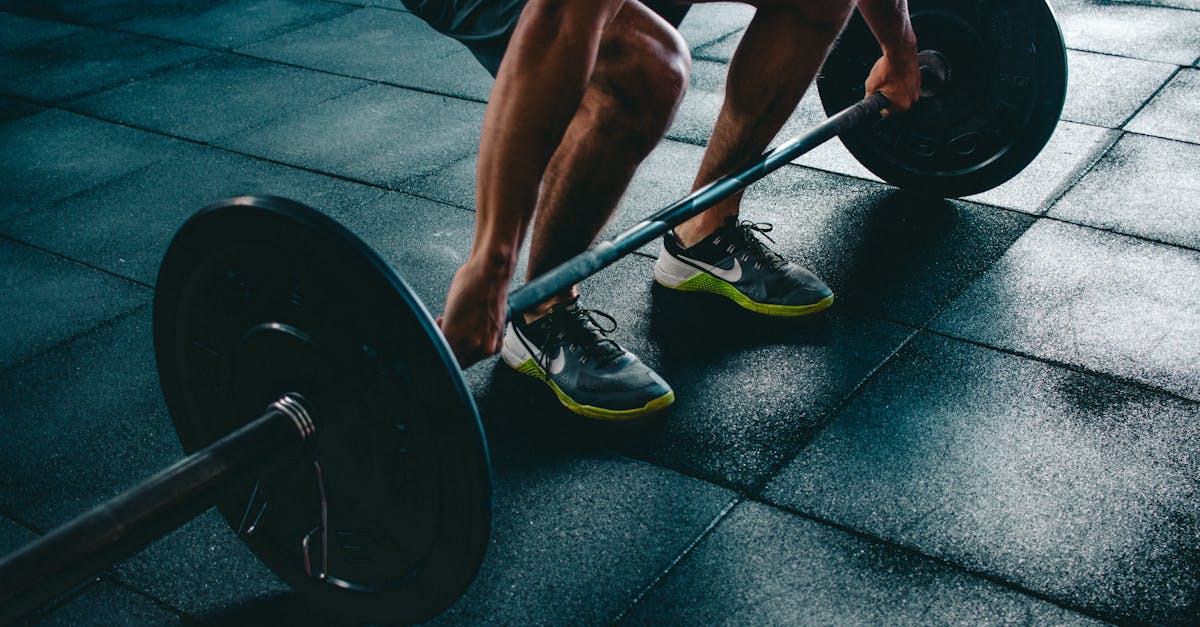“`
Are you confused about whether to start your workout with cardio or weights? It’s a common question, and the answer isn’t a simple one-size-fits-all solution. The best approach really depends on what you’re hoping to achieve. In this article, we’ll explore the optimal sequence for combining *cardio* and *weights*, and help you figure out what is best for your unique fitness goals, using my own experience and expert-backed advice to guide you. I’ll break down the benefits of each approach so you can confidently design your workouts.
Should I Do Cardio or Weights First?
Understanding Your Fitness Goals
Before diving into the specifics, it’s crucial to understand what your fitness goals are. Are you aiming to build strength, improve endurance, or lose weight? Each goal will have different approaches to the order in which you combine your workouts. For example, my friend Sarah was training for a marathon and I suggested that she should focus on doing her cardio first to improve her endurance before lifting weights.
Cardio Before Weights: When It Makes Sense
If your primary goal is to enhance your cardiovascular health and build endurance, especially if you’re training for an endurance event like a marathon, starting with *cardio* is often the better approach. This preps your cardiovascular system and improves your stamina for the weight training that follows. Think of it as warming up your engine before loading it with cargo.
Many endurance athletes I’ve known start with long cardio sessions and then end their session with weights. This is because when you start with cardio, you are giving priority to your endurance training. You may also use *cardio before weights* as a general warm-up session as mentioned by the *MensHealth* guide, a good warm-up before any workout reduces injury risk, and gets your muscles ready for the training that is to come. This approach helps to improve performance by optimizing your training session.
Weights Before Cardio: When to Prioritize Strength
On the other hand, if your main focus is building strength, you should prioritize lifting weights before your cardio workout. Lifting weights before cardio can lead to better muscle gain, the *Women’s Health Magazine* states. This is because *lifting weights* is typically more physically demanding than cardio, it involves external loading, which has a higher injury risk. So, it’s best to do it when you have the most energy.
If you start with cardio, your muscles will be pre-fatigued. This can increase your risk of injury when you get to weights, and reduce your overall performance. You might not be able to lift as much or perform as many reps as you would have otherwise. I remember when I first started weight training, I’d often do a quick run beforehand, and I always felt weaker during my lifts. I learned the hard way that it’s better to hit the weights first when you’re fresh!
Cardio After Weights: Maximizing Fat Loss
If your primary goal is fat loss, it’s suggested to do your *cardio after weights*. Doing cardio after resistance training might help you burn more fat during the beginning of your cardio session. Research from the *One Peloton* blog shows that this approach may lead to more effective fat burning.
This is because when you lift weights first, you use up your glycogen stores, and when you start your cardio session, your body starts burning fat for fuel more quickly. So, if you want to burn as much fat as possible, it’s best to hit the weights first, and then use that as fuel to maximize your fat-burning cardio workout. This does not mean that you can’t burn fat if you do cardio first, but that you might get better results if you do cardio after.
General Workout Recommendations
The U.S. Department of Health and Human Services recommends that adults aim for at least 150 minutes of moderate-intensity cardio or 75 minutes of vigorous-intensity cardio per week, as well as strength training twice a week. Ultimately, the best approach is to tailor your workouts to your specific goals and schedule. The key is to find a workout routine that you can maintain and enjoy.
For beginners, it’s important to start slowly and gradually increase the intensity and duration of your workouts. Listen to your body and don’t push yourself too hard, especially when starting out. It’s better to be consistent and gradually increase the intensity as you improve, rather than try to do too much too soon and risk injury. It’s all about consistency and finding a balance that works for you. I have personally seen a lot of people try to push themselves too hard too soon and get burnt out.

Exceptions to the Rule: Warming Up
Regardless of your specific goals, warming up is always essential. Before any workout session, start with a light warm up. This could include light cardio or dynamic stretching to prepare your muscles for the work they are about to do. A warm up session will help to reduce the risk of injury and improve overall performance. This is especially important for beginners, who might be more prone to injury if they start a workout without proper preparation.
For me, even a 5 minute light jog or a few minutes of jumping jacks can make a huge difference in how I feel during my workout. It’s a small step that can really protect your body and help you get more out of your training. This will optimize your training session by ensuring your body is ready.
Sample Workout Routines
Let’s take a look at some sample workout routines based on different goals. These are just examples, and you should always customize your workout to match your own abilities and needs.
| Goal | Workout Order | Example Activities |
|---|---|---|
| Endurance Training | Cardio First | 30 mins running, 30 mins weight training |
| Strength Training | Weights First | 45 mins weight training, 20 mins cycling |
| Fat Loss | Weights First, Cardio After | 40 mins weight training, 30 mins HIIT training |
Conclusion
The question of whether you should do *cardio or weights first* really depends on what your main fitness goals are. If you’re aiming for better endurance, start with *cardio*; if you’re focused on building strength, prioritize *weights*. And for those looking to lose weight, doing *cardio after weights* may be more effective. Remember, warming up is always crucial. The most important thing is that you have to make your workout sessions consistent and find an approach that works for you.
Don’t be afraid to experiment with your workout routine to see what works best for your body and needs. And don’t forget to seek advice from a trainer. It’s okay to make changes if something doesn’t feel quite right. If you’ve found this article helpful, why not share it with your friends who might be struggling with the same question? You can also subscribe to our newsletter for more fitness tips and advice. Let’s all get better and stronger!
FAQ
Can I do cardio and weights on the same day?
Yes, you can absolutely do both *cardio and weights* on the same day. The key is to strategically order them based on your goals, as discussed above.
Is it okay to skip cardio if I’m focused on building muscle?
While you can skip cardio if your primary goal is to build muscle, including some form of *cardio* in your weekly routine is still important for overall health and fitness. It doesn’t have to be high intensity, some light cardio is enough.
How long should I do cardio after weights?
For fat loss, aim for 20-30 minutes of *cardio after your weight training*. However, you can adjust the duration based on your personal preferences and workout schedule.
What kind of cardio is best after weight training?
The best cardio after weights is something you can enjoy and sustain at an intensity that suits you. HIIT, running, and cycling are all good options. You can use these as well as other options that you might have to get the best results.
Is there an ideal time of day for cardio or weight training?
The ideal time of day for *cardio* or *weight training* varies from person to person. Find a time that suits your daily schedule and when you feel most energetic. The most important thing is consistency.
“`



